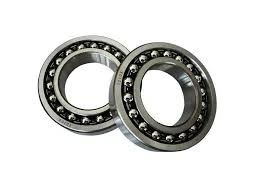
Sep . 25, 2024 19:25 Back to list
axial thrust bearing
Understanding Axial Thrust Bearings Design, Function, and Applications
Axial thrust bearings are essential components in various machinery and equipment, providing critical support to manage axial loads — forces that act parallel to the axis of the shaft. These bearings play a vital role in ensuring smooth operation, enhancing performance, and prolonging the lifespan of mechanical systems. This article delves into the design, functionality, and applications of axial thrust bearings.
What is an Axial Thrust Bearing?
An axial thrust bearing is a type of bearing designed to handle axial loads, which are forces that push or pull parallel to the shaft. Unlike radial bearings that support loads perpendicular to the shaft, axial bearings are specifically engineered to bear thrust forces. They consist of two main components a rotating part (the shaft) and a stationary part (the housing). The contact surfaces between these components can be either rolling elements, such as balls or rollers, or flat surfaces in the case of thrust pads.
Design and Construction
The design of axial thrust bearings varies significantly depending on the application and load requirements. In general, their construction includes
1. Thrust Collars These are the flat surfaces on which the rolling elements or the thrust pads operate. They are typically made of high-strength materials to withstand wear and tear from friction.
2. Rolling Elements In rolling-element thrust bearings, balls or cylindrical rollers are placed between the thrust collars. These elements reduce friction and facilitate smoother rotation.
3. Housing The outer casing that holds the thrust collars and provides mechanical support. It must be adequately designed to handle the loads and stresses during operation.
4. Lubrication To minimize friction, axial thrust bearings require a lubricant, which can be oil or grease. Proper lubrication is crucial for extending the bearing's life and maintaining performance.
Functionality
The primary function of axial thrust bearings is to support axial loads while allowing for controlled rotational movement
. This capability is crucial in numerous applications, as the bearings helpaxial thrust bearing

- Reduce Friction By providing smooth contact surfaces, axial thrust bearings minimize friction between moving parts, which helps in maintaining operational efficiency.
- Ensure Stability They contribute to the stability of rotating systems by keeping the shaft in the correct position, preventing misalignment, and reducing the risk of mechanical failure.
- Dissipate Heat Axial thrust bearings help dissipate heat generated from friction, which is vital for preventing overheating and subsequent damage to the machinery.
Applications
Axial thrust bearings find their place in a wide range of applications across various industries
1. Automotive Industry In vehicles, these bearings are commonly used in transmissions and differential assemblies to manage axial loads effectively.
2. Aerospace Axial thrust bearings are critical in aircraft engines where high-speed rotational loads must be managed with precision.
3. Marine Applications Ships and submarines utilize these bearings in propeller shafts, allowing for efficient thrust distribution and enhancing performance.
4. Industrial Machinery Heavy machinery used in manufacturing and construction often employs axial thrust bearings to withstand the significant axial forces present during operation.
5. Hydraulics and Pneumatics In hydraulic presses and pneumatic systems, thrust bearings play a vital role in managing the forces exerted during operation.
Conclusion
Axial thrust bearings are indispensable components in modern machinery, significantly contributing to the reliability and efficiency of various mechanical systems. Their unique design enables them to withstand axial loads, reduce friction, and dissipate heat, ultimately enhancing performance and extending the lifespan of equipment. As industries continue to evolve, the importance of axial thrust bearings will likely increase, highlighting the need for continuous innovation and improvement in their design and application. Understanding these bearings’ functionality and relevance can help engineers and designers select the appropriate solutions for their specific mechanical challenges.
Latest news
-
Spherical Roller Bearings Applications: Heavy Duty, Self-Aligning
NewsAug.30,2025
-
Premium Deep Groove Ball Bearings | High Speed & Reliability
NewsAug.29,2025
-
Durable Scaffolding Clamps - Secure & Reliable Tube Connectors
NewsAug.28,2025
-
Common Failures in Thrust Ball Bearings and Solutions
NewsAug.22,2025
-
How Tapered Roller Bearings Can Take Shock Loads
NewsAug.22,2025
-
Angular Bearings in High-Precision Spindles
NewsAug.22,2025
